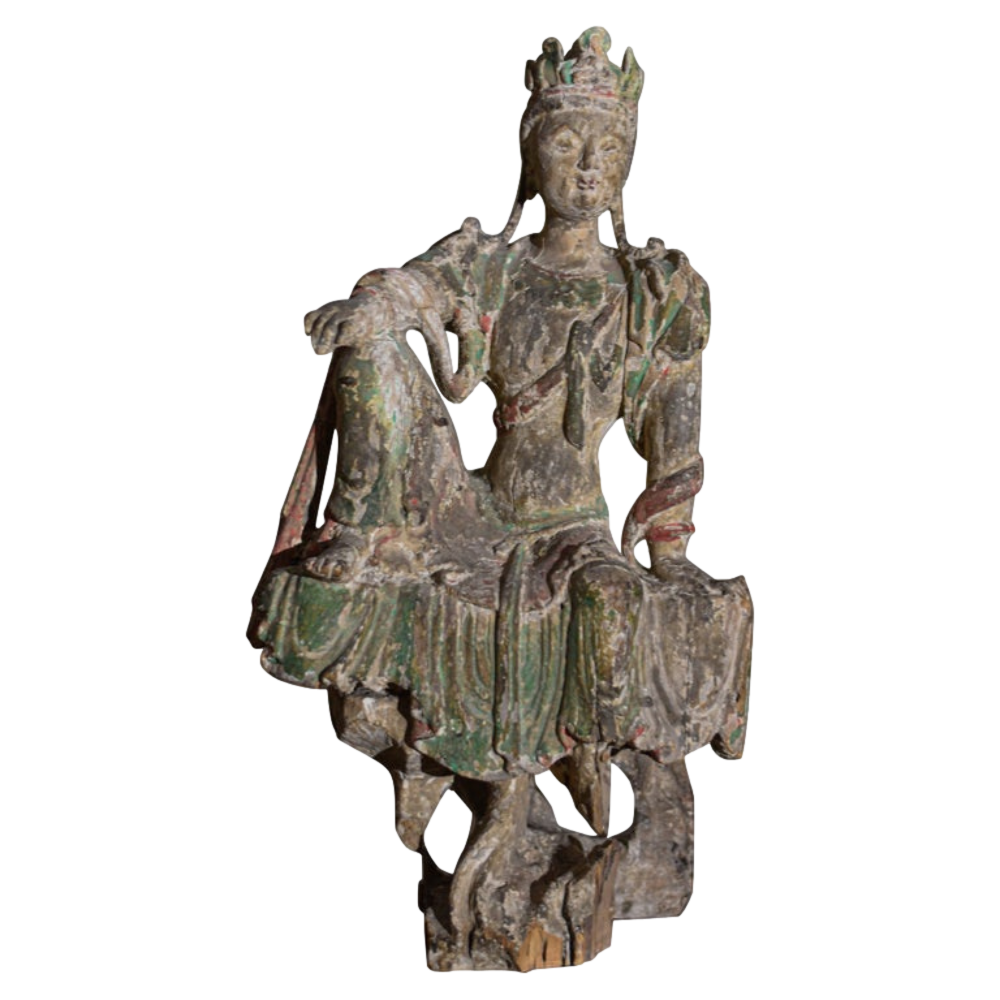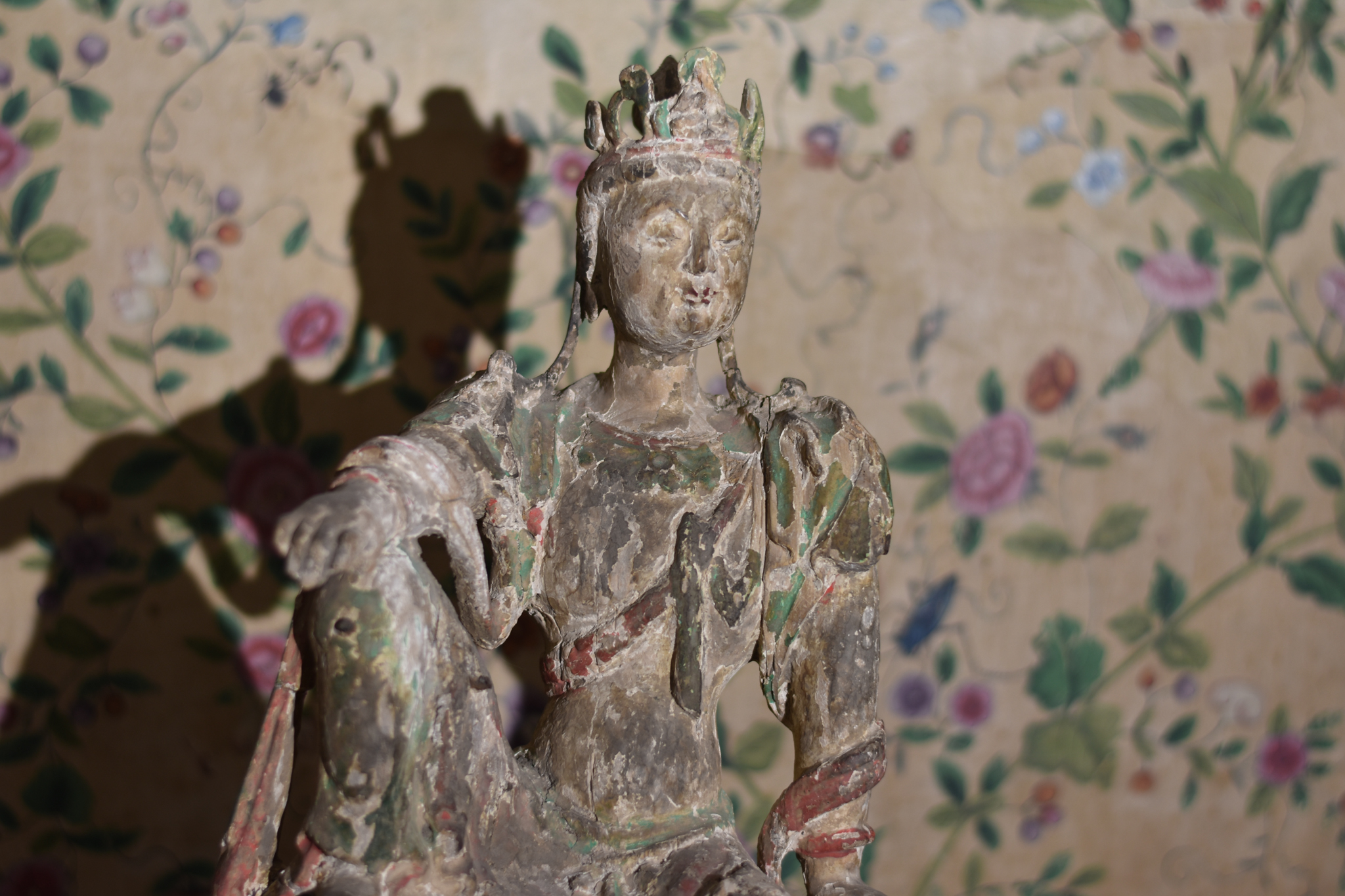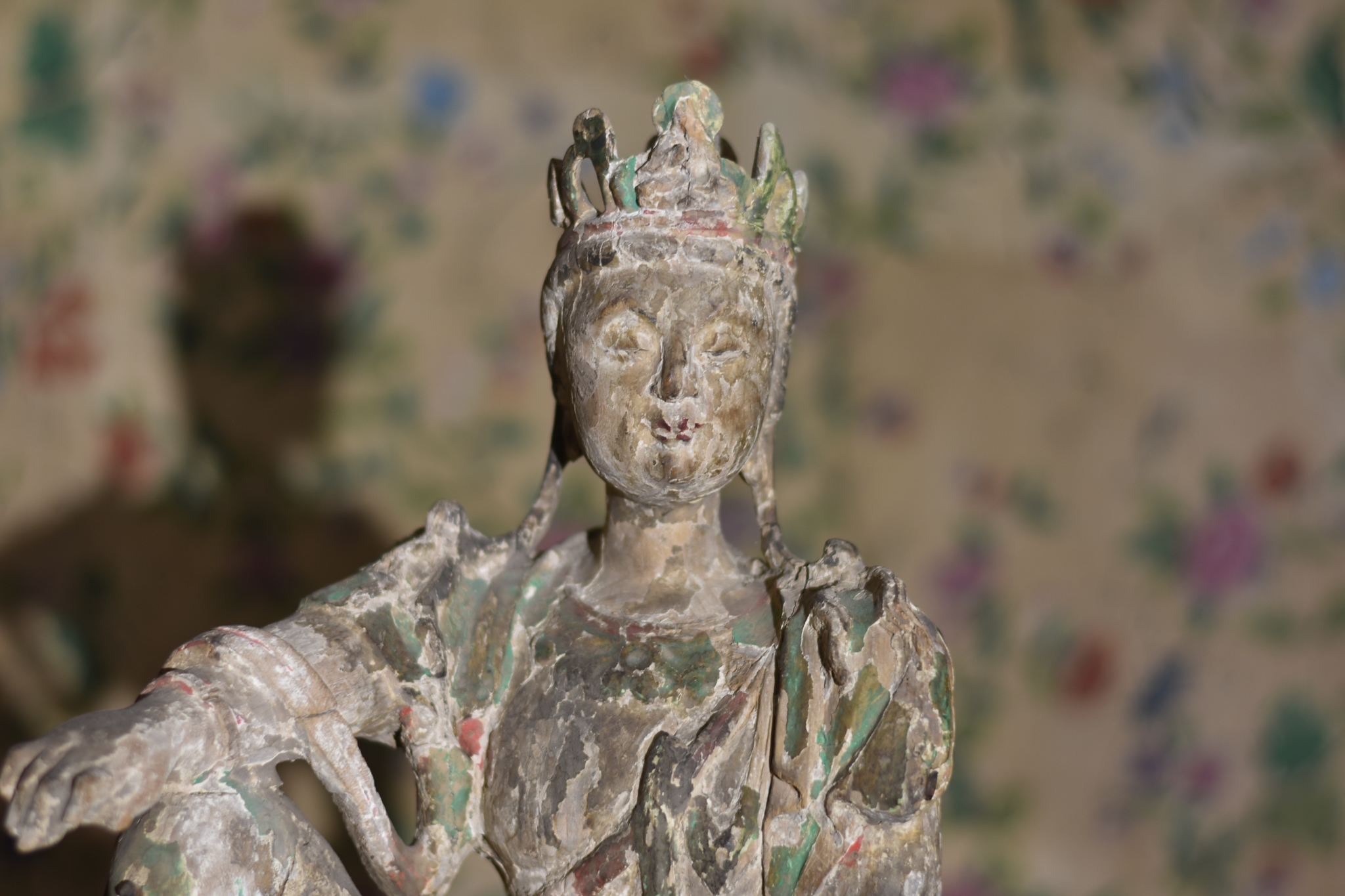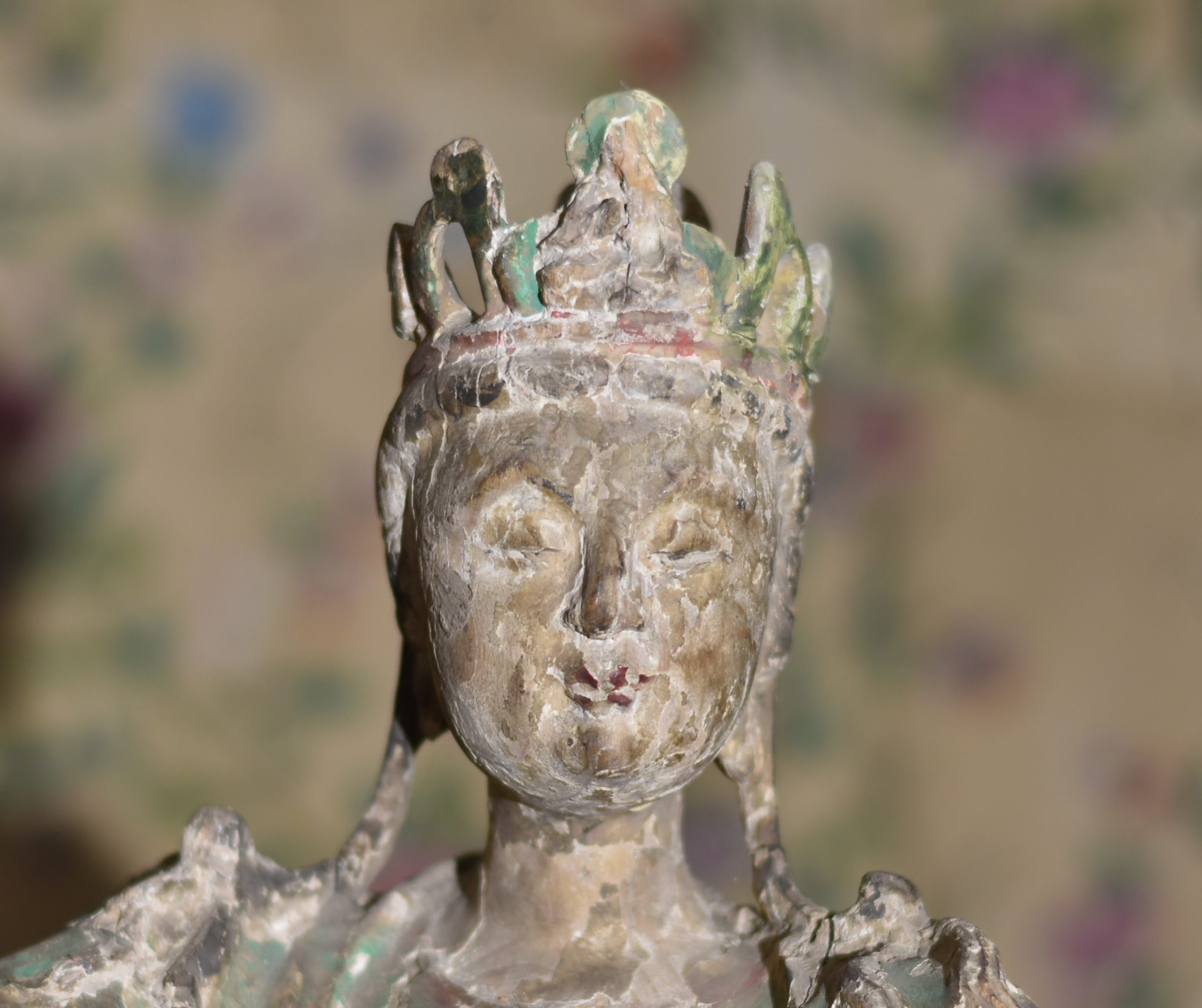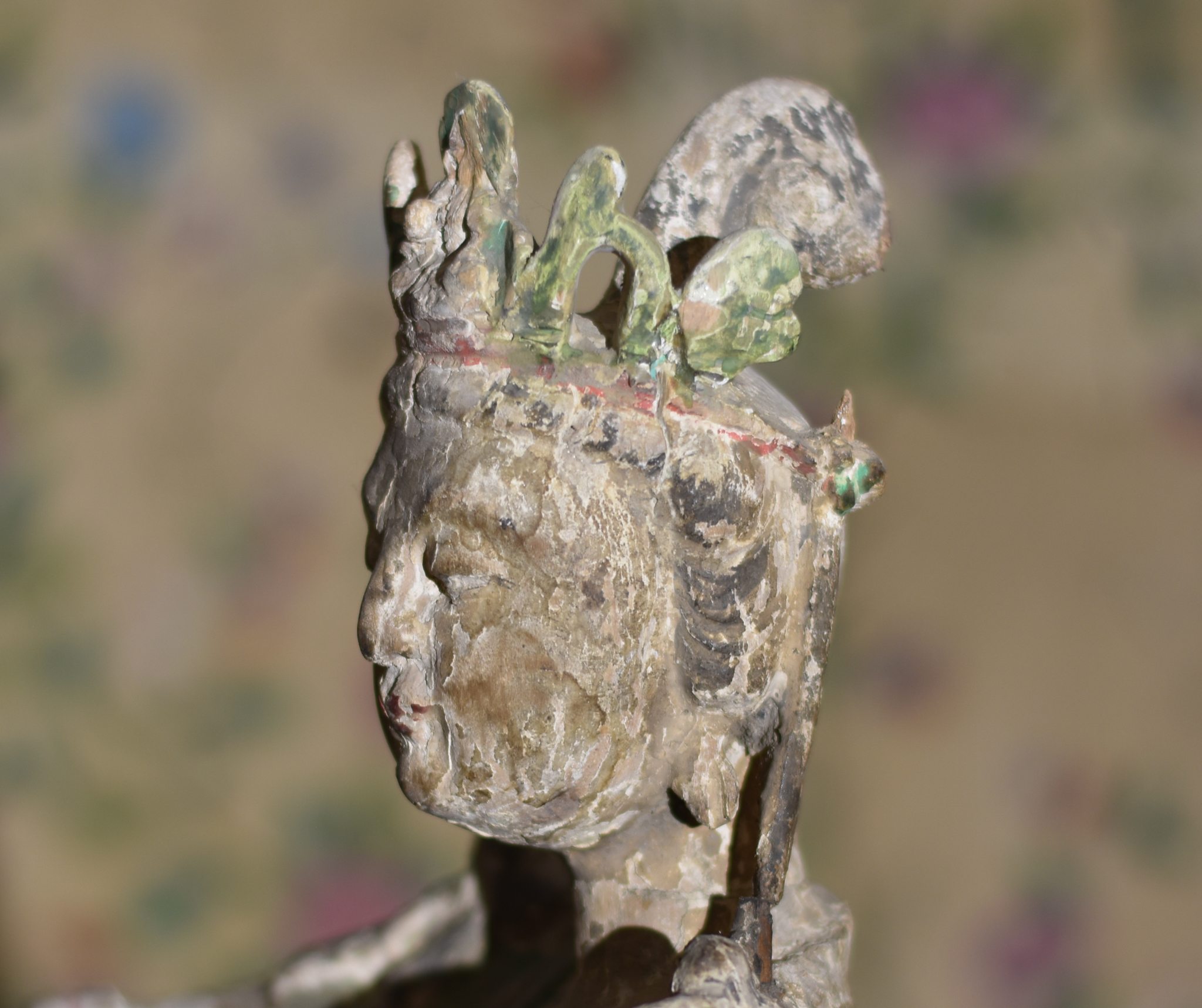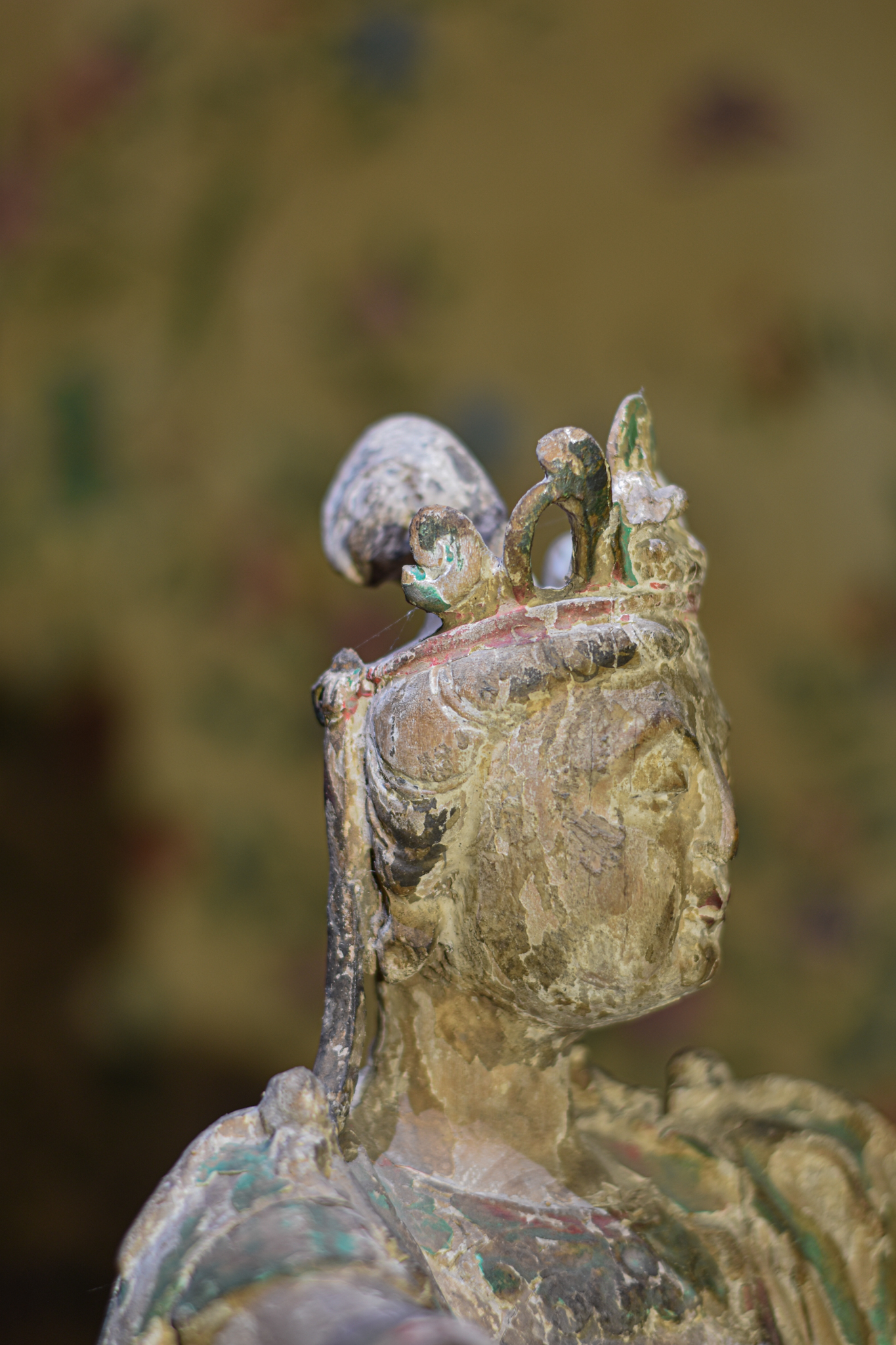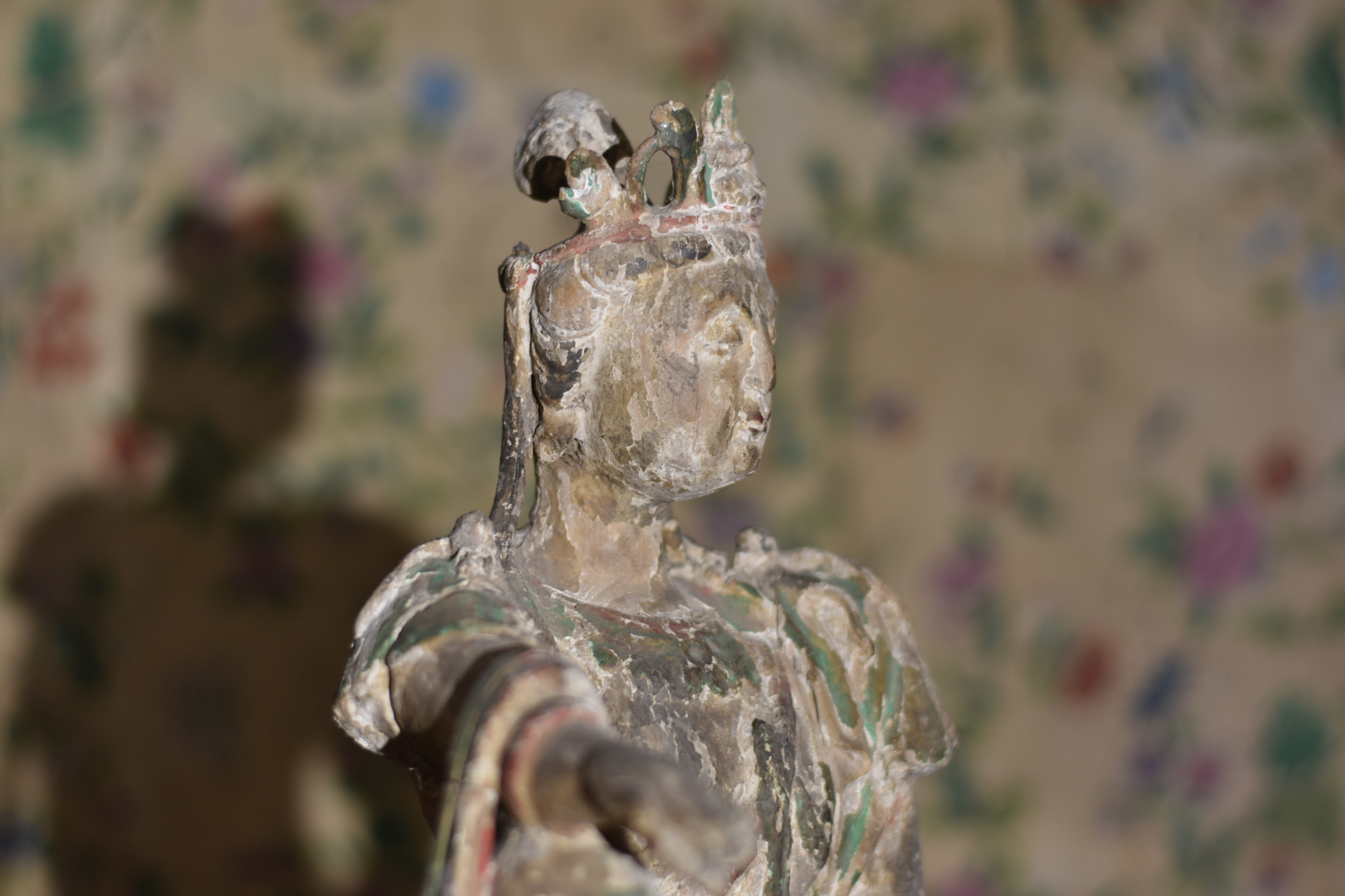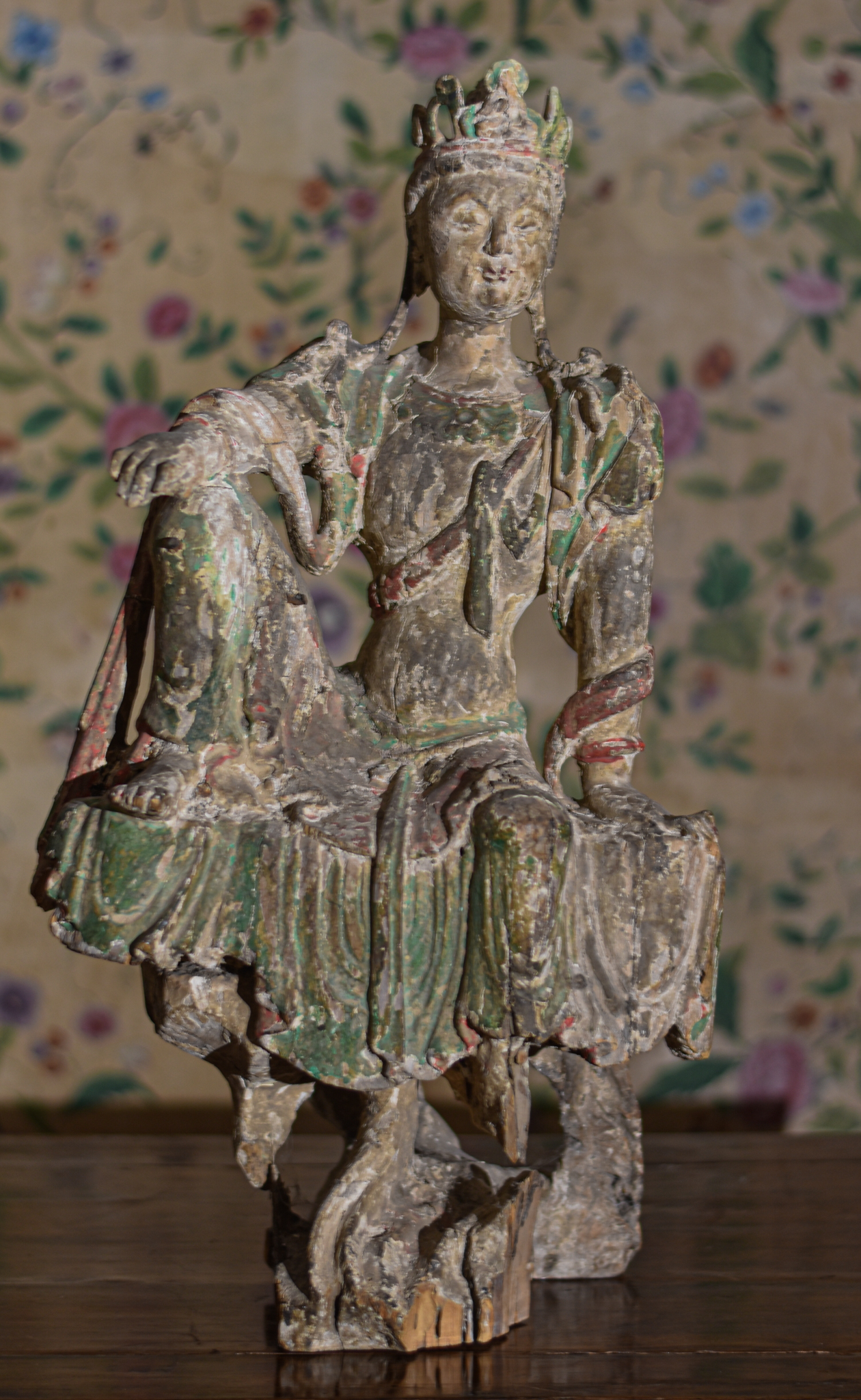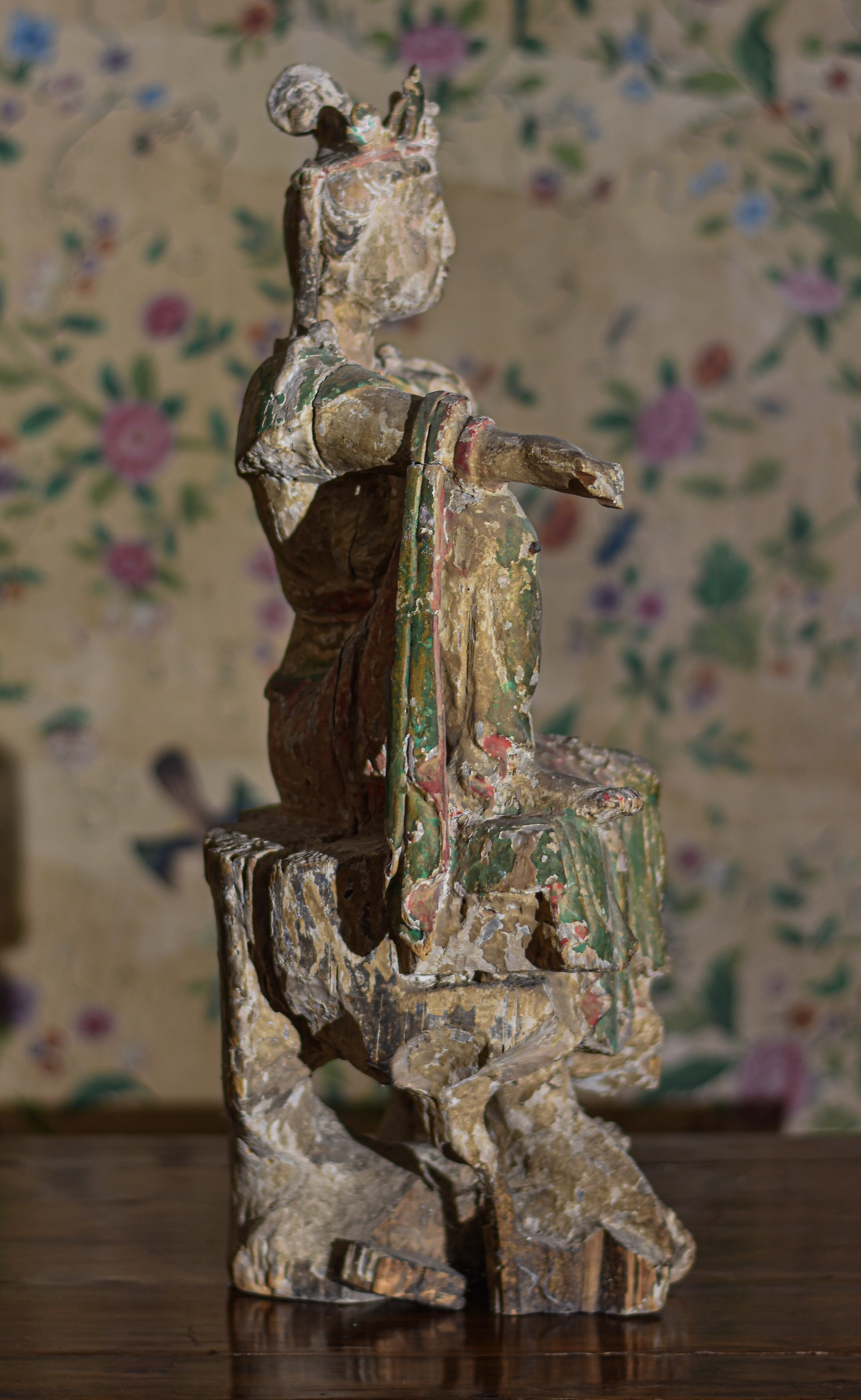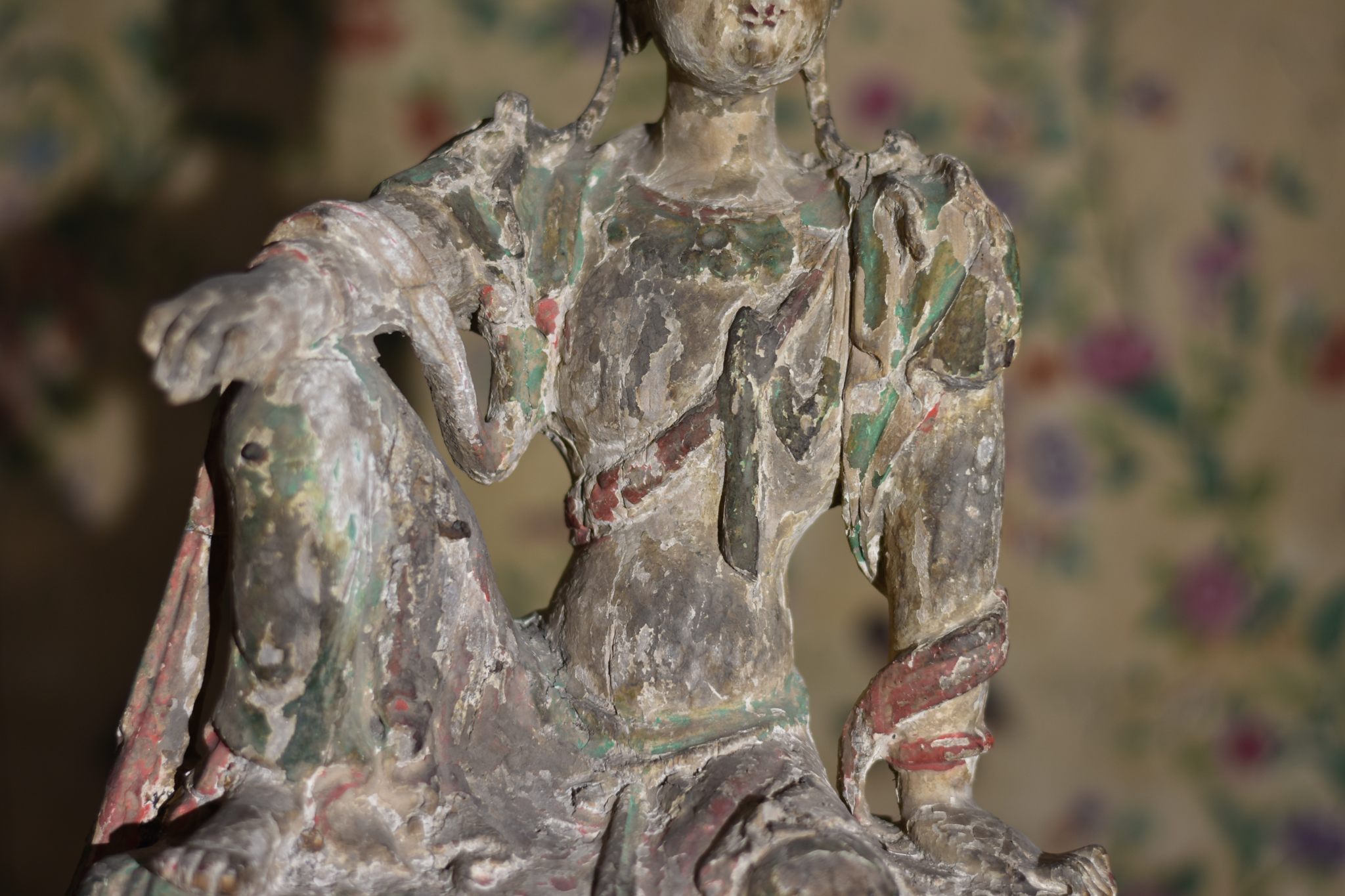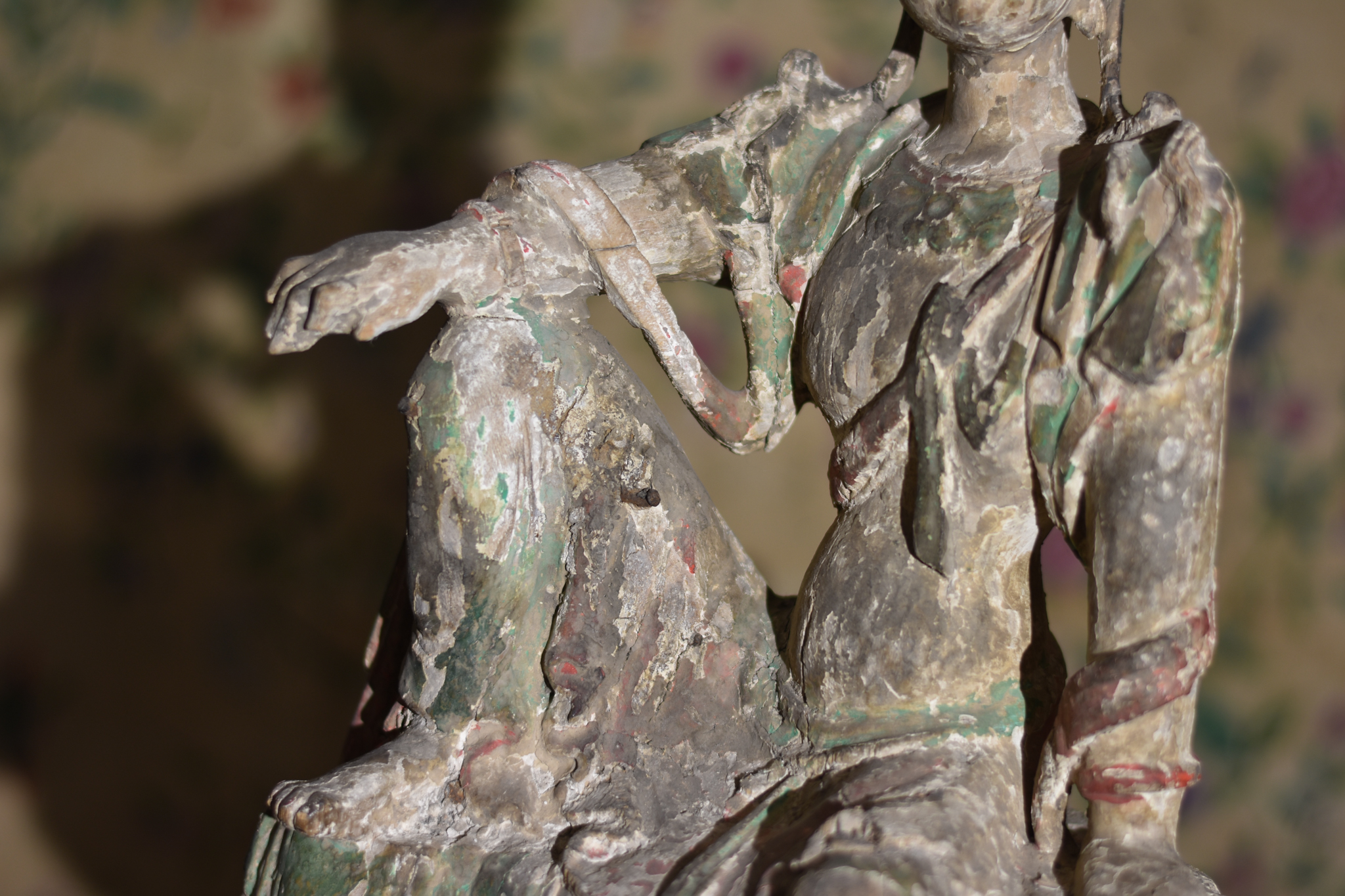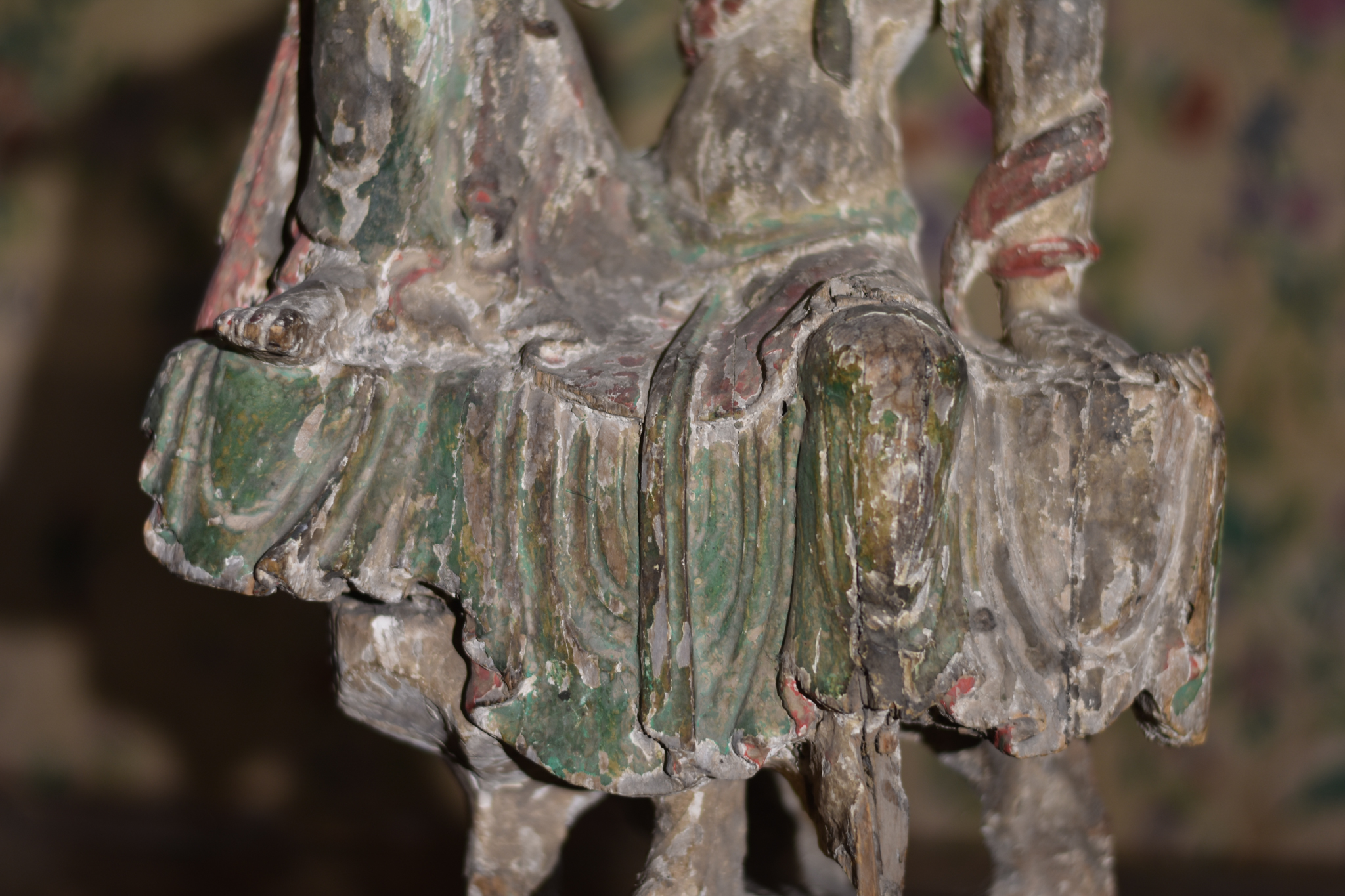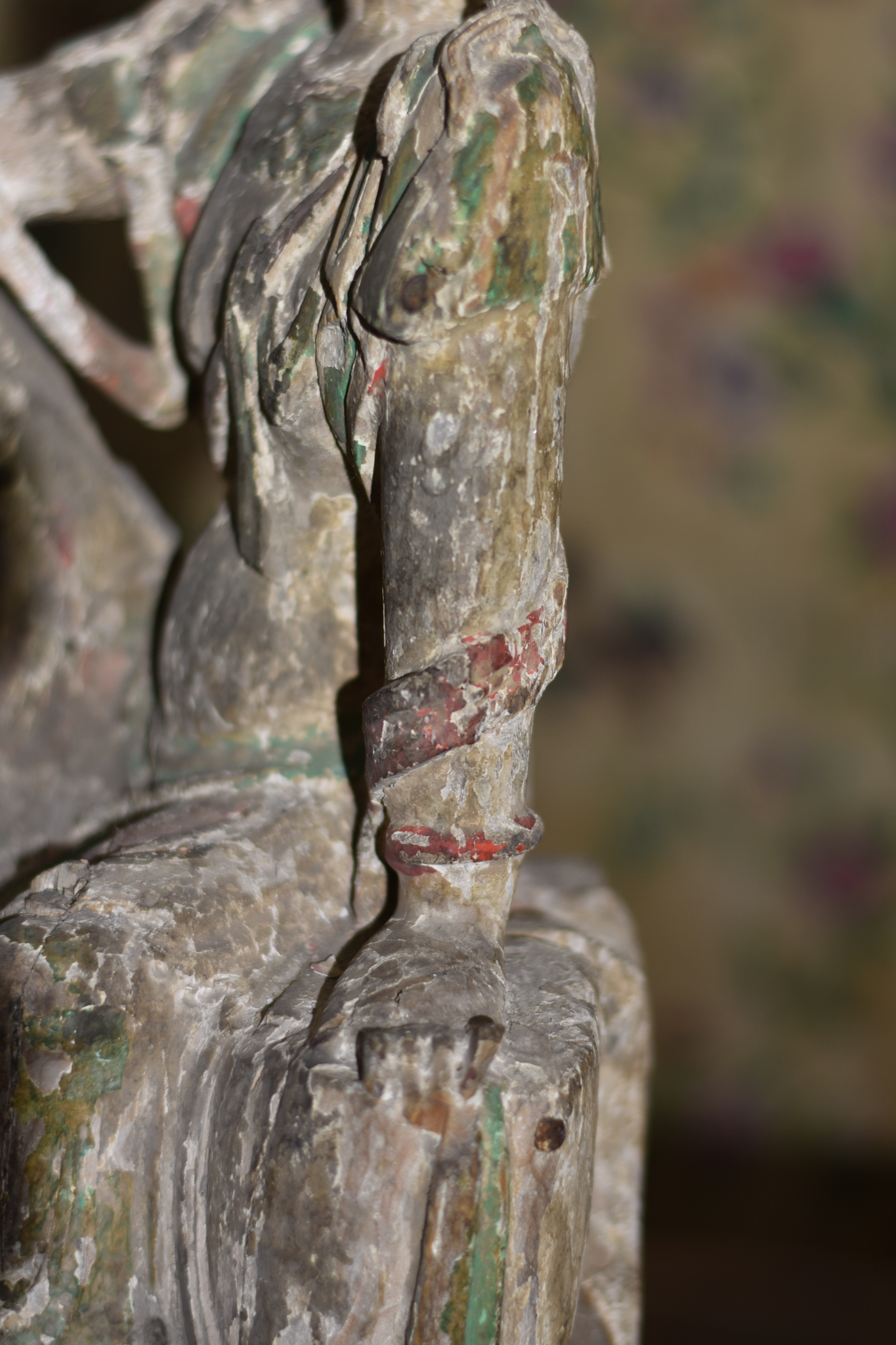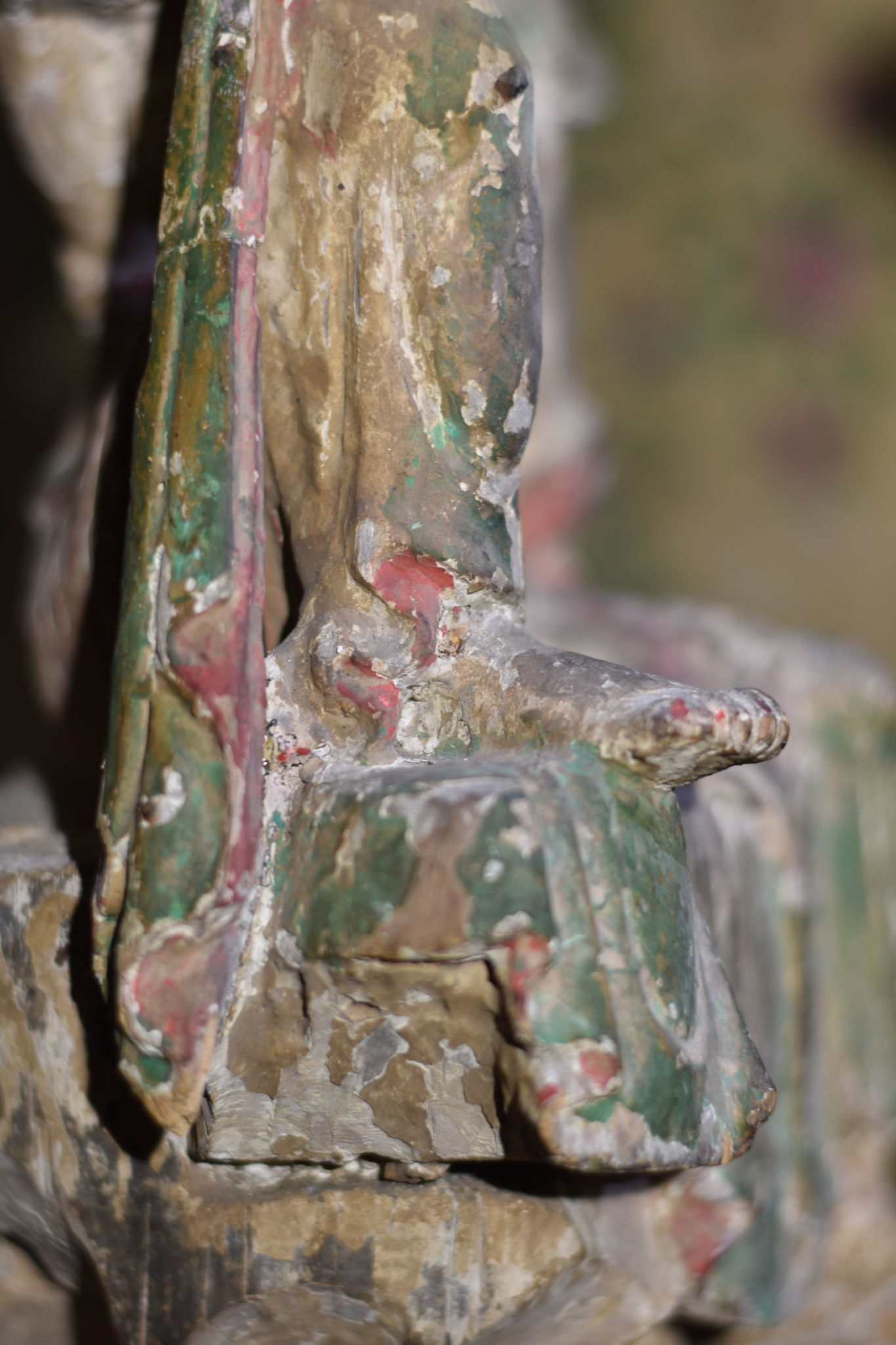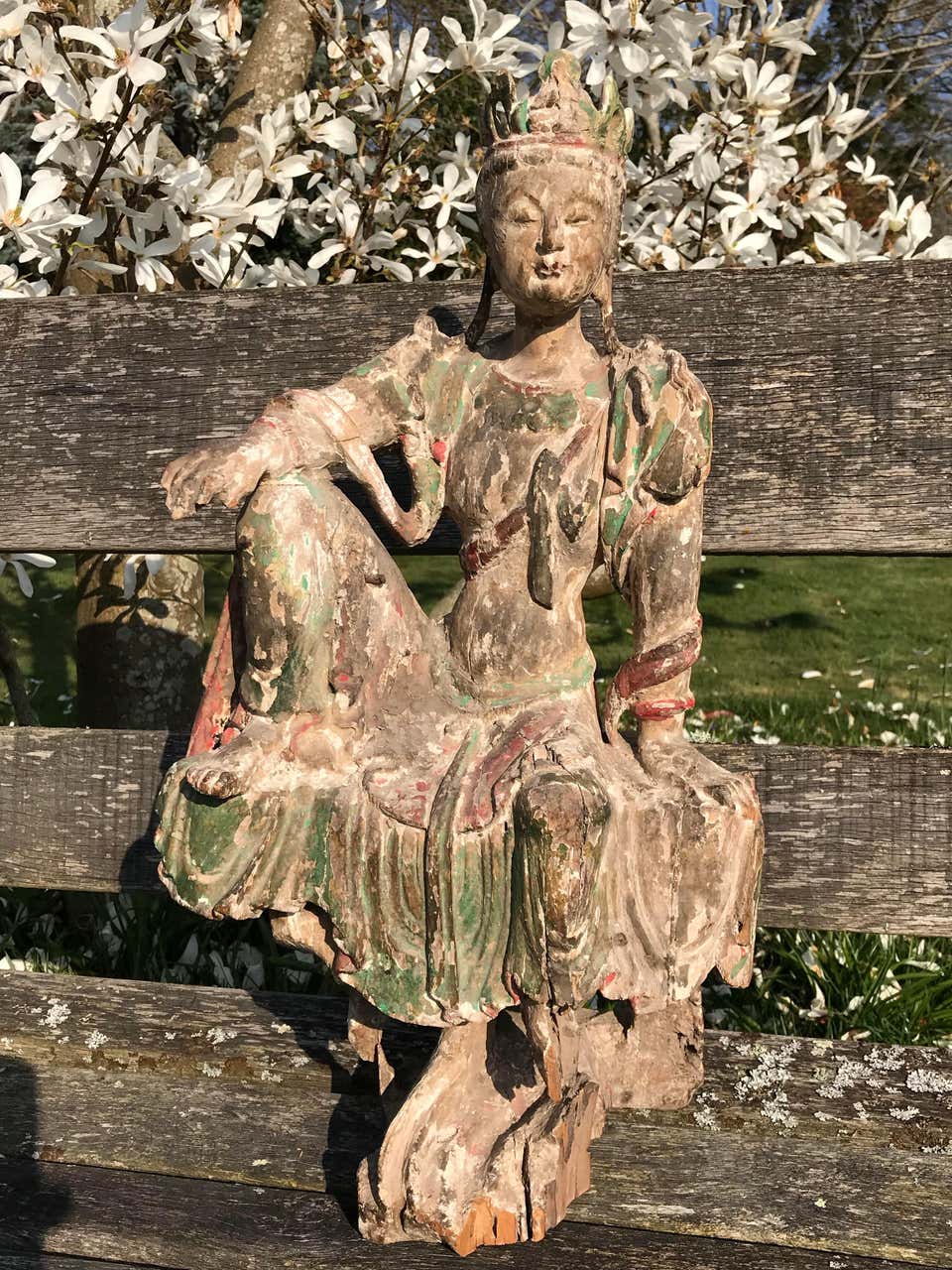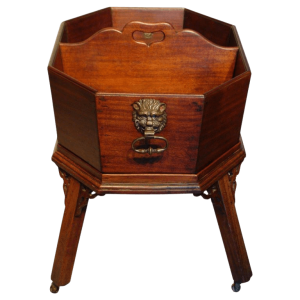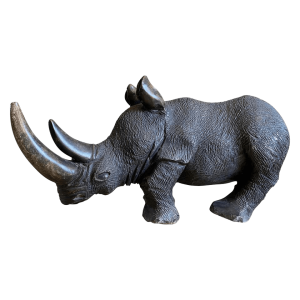Description
A rare Chinese Guan Yin figure, early Ming dynasty (1368-1644).
Nb. Often these early wooden sculptures have been overpainted and stripped many times over the centuries, and finished with a papier mâché reinforcing outer layer. Originally these figures would have been polychrome painted in naturalistic colours and would have served as objects of great veneration in ancient China. Guan Yin (or Kwan Yin) is considered by some to be the most widely beloved Buddhist divinity. She is the female bodhisattva of infinite compassion and mercy in East Asian Buddhism. Her full name is Guan Shi Yina. Guan translates as observe, watch, or monitor. Shi refers to the world. Yin means sounds – specifically the sounds of those who suffer.
As such Guan Yin is perceived as a compassionate being who watches over and responds to those around the world who cry out for help. To be compassionate is the supreme virtue of Mahayana Buddhism. Guan Yin is also associated with vegetarianism – an act of compassion toward animals. Guan Yin was introduced to China as early as the first century AD.
The V & A Museum in London has a superbly conserved Guan Yin with evidence of having been completely redecorated at least four or more times. See V & A, London (Scala Publications Ltd) p. 111, illustration 3.
A similar Guan Yin sold @ £8,600.00, Bonhams, 17th December 2018, lot 272.



